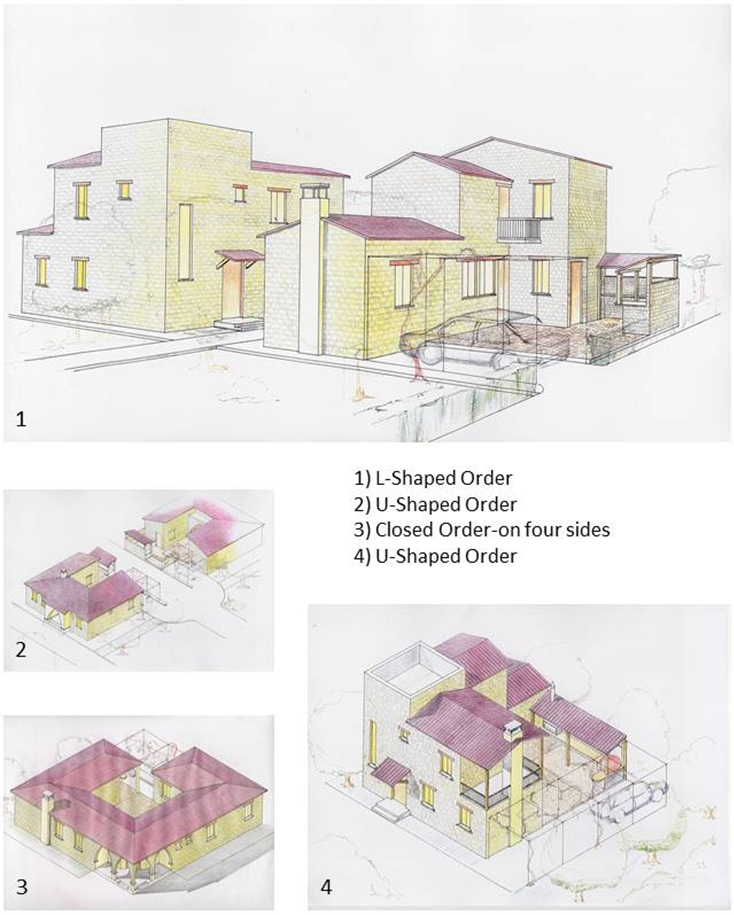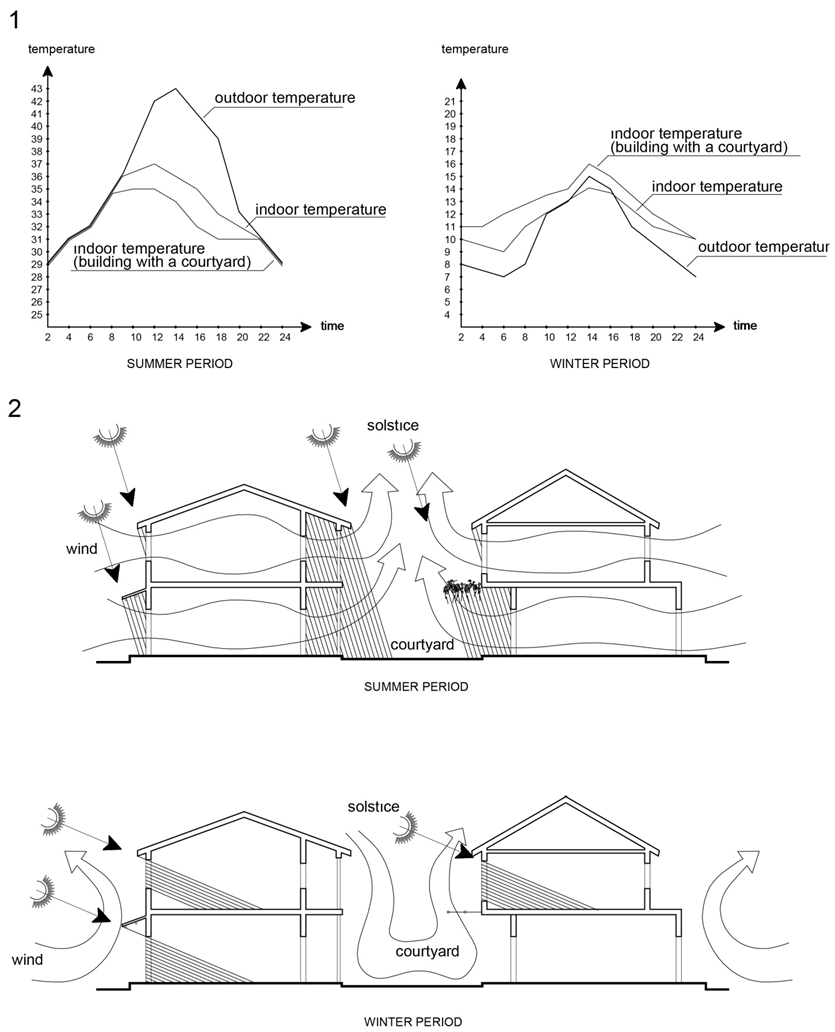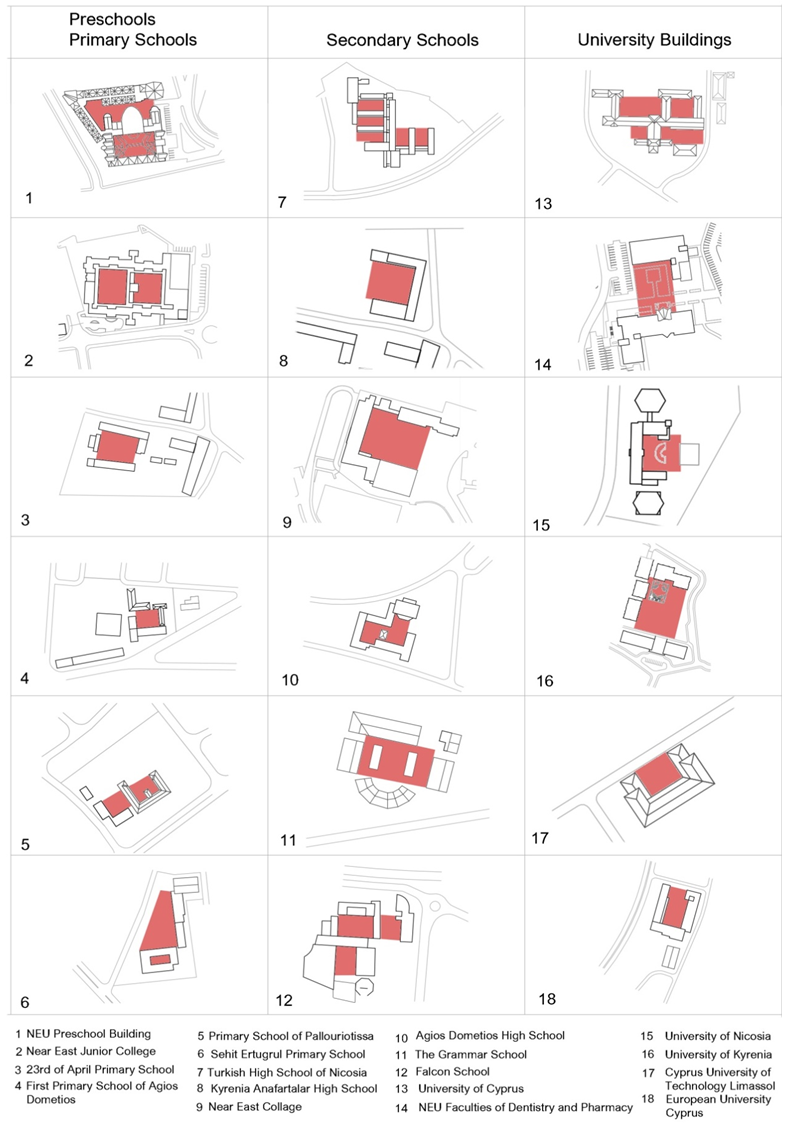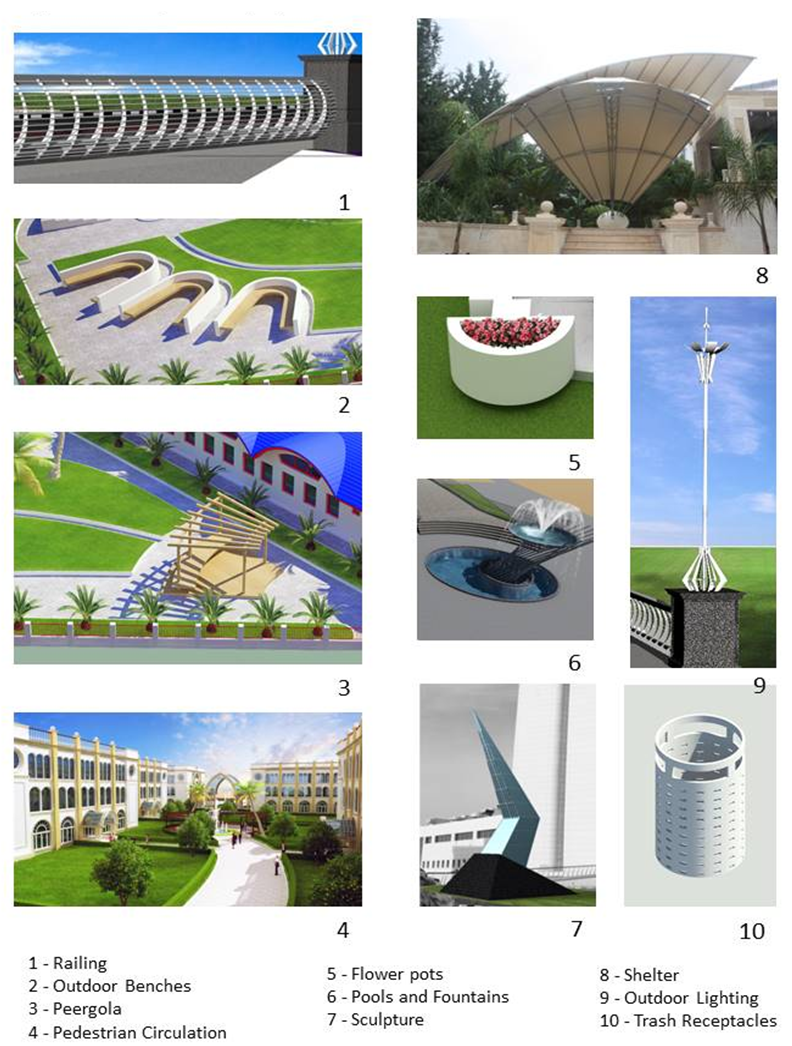-
Paper Information
- Previous Paper
- Paper Submission
-
Journal Information
- About This Journal
- Editorial Board
- Current Issue
- Archive
- Author Guidelines
- Contact Us
Architecture Research
p-ISSN: 2168-507X e-ISSN: 2168-5088
2016; 6(5): 123-130
doi:10.5923/j.arch.20160605.03

The Role of the Courtyard in the Establishment of Architecture in Cyprus
Raisa Kolozali, Türköz Kolozali
Faculty of Architecture, Near East University, Nicosia, Cyprus
Correspondence to: Raisa Kolozali, Faculty of Architecture, Near East University, Nicosia, Cyprus.
| Email: |  |
Copyright © 2016 Scientific & Academic Publishing. All Rights Reserved.
This work is licensed under the Creative Commons Attribution International License (CC BY).
http://creativecommons.org/licenses/by/4.0/

From looking at the history of architecture in Cyprus the presence of many architectural styles and inspirations can be clearly seen. The one element that was vital to the design of these styles was the courtyard. However, by the second half of the 20th century the use and presence of courtyards has slowly begun to diminish. The main causes for this were the advancement in technology, changing lifestyles, and changes in socio-economic status of the population. The biggest exception to this is the apparent use in educational buildings such as primary and secondary schools. Over the last three decades the popularity and demand for university campuses have greatly increased and advanced at a remarkable rate. The function and application of courtyards take place in design of university complexes. The inner courtyard protects the building form dust, and breeze, furthermore casts deep shadows which protect the walls and the space from overheating.
Keywords: Courtyard design, Applications of the courtyard, Equipment of the courtyard
Cite this paper: Raisa Kolozali, Türköz Kolozali, The Role of the Courtyard in the Establishment of Architecture in Cyprus, Architecture Research, Vol. 6 No. 5, 2016, pp. 123-130. doi: 10.5923/j.arch.20160605.03.
Article Outline
1. Introduction
- The courtyard is an integral part of a centuries-old culture in Cyprus. The courtyard as an element of architectural solutions should be preserved. To achieve this, the situation to date and prospects outlined for development must be objectively analysed. Changes in lifestyle, working conditions and training results further changes in the scope of use of the courtyard. It is necessary to consider not only the natural-climatic, but also economic, and functionality factors, as well as a method of building space around the courtyard, its parameters and improvement.
2. Methods of Layout of Courtyards
- The primary attention in layout of the urban design elements was paid to the orientation of inner courts. The spaces were situated from the southern side of the court with openings which had an orientation towards the North. This factor enabled to catch the cool northern winds and protect the spaces from direct solar radiation. In relation to the court space the different functional premises were arranged by different methods: on two sides – opposite of each other, in the L-shaped order, in the U-shaped order and in the closed order – on four sides. In Fig.1 majority of all four methods of layout of the rooms in relation to the court space are shown. The methods of their blocking and the examples of the plans, taken from the historic areas of Nicosia, the capital of Cyprus, and Kyrenia are shown in Fig.3.
3. The Use and Application of the Courtyard
- During the whole year an average of 35 unstable weather systems with a duration from one to three days each exerts its own influence on the weather of Cyprus. January and February are the coldest months of the year (Fig.2, 1). Furthermore, the rapid change to low temperatures are explained by the effect of the artic polar air masses moving from north towards Cyprus. In winter season the unstable weather system prevails over Cyprus with cloudiness, rain, snow and hail. This is explained by the instability of an upper layer of the atmosphere, by the effect of discharges, hot and cold fronts. The hottest months of the year are July and August (Fig 2, 1). The very high temperature is subject to the effect of hot and dry air masses. In summer season over Cyprus the low pressure region is formed with a center in South-West Asia and masses of hot dry air. For its neutralization the recommendations have been elaborated specified in Fig. 2, 2. The courtyard appeared as a result of the necessity to protect the human body from the harmful effects of thermal factors. The introduction of such an element as a courtyard creates the comfortable and suitable conditions for any activities. The courtyard circulates the air protecting the inhabitants from harmful effects of stormy winds, hot weather, and dust winds. The courtyard casts shadows from all sides and is surrounded by a gallery, which creates a deeper shadow, which protects the walls and the spaces arranged behind them by preventing them from overheating.The strong overheating of the building in summer season is the most negative effect of climate of Cyprus. In summer time the building must be protected from sunlight, furthermore winds and breezes should preferably be used to create natural ventilation. The courtyard guides cold air downward, to protect the inhabitants from harmful effects of winds, hot weather (heat), dust winds to provide comfortable conditions (Fig. 2, 2). During winter time the reverse must be applied meaning that the building must be sheltered from winds and breezes and take advantage of sunlight to provide natural and efficient heating. Taking into consideration that these two required conditions are in contrast to one another the contrast and its issues can be overcome with the use and application of courtyards. The application of courtyards in Cyprus does not only serve to satisfy the needs of residential buildings, but also serves in the same manners to satisfy the environmental conditions of other categories of buildings such as those providing public grounds (Fig. 3).
 | Figure 1. Trapeza Holiday Village project. Architects: Turkoz Kolozali and Raisa Kolozali |
 | Figure 2. Climatic analysis of building design. 1 - Temperature conditions. 2 - Design recommendations (Illustrations by R. Kolozali, T. Kolozali.) |
4. The Courtyard’s Dimensions
- The court parameters are directly interrelated with the height of the premises in a building. The width and depth of a court are usually greater than the height of premises that ensures the isolation of the space within the court and surrounding premises all the year around. The exception is made only for the areas where the hot dust winds prevail. In such areas the height of the surrounding premises of the inner court are greater than its width. The areas of the courts are not standardized and are determined by the functions. Through the analysis carried out, the measurements of the building have shown that the court area is made up of about a half of the building area (Fig. 3).When building the order for the layout and dimensions of the rooms with different purposes surrounding the open courts was determined not only by the adaptability of the rooms to the natural-climatic conditions but also to the domestic needs associated with the economic conditions such as cooking, feasting, resting, sleeping, and celebration of holidays or significant events.
 | Figure 3. Historic Courtyard Designs of Various Buildings. Illustrations by R. Kolozali, T. Kolozali |
5. Courtyards Design in Educational Building
- Just as in any building courtyards play an important role for creating the microclimate in educational building. In the second half of the 20th century the use of courtyard in primary and secondary school design (Fig 4) was due to the necessity and for safety of children from exterior threats while providing areas that would serve ceremonial, educational and relaxing processes. The courtyards designed in educational buildings possess a U-shape and in the closed order and have dimensions that are proportional to the height of the surrounding blocks. The order of the premises does not only depend on Cyprus’s climate, but it also depends on functional organisation of educational building. Using the courtyard in the design of buildings gives the possibility to divide spaces by functions such as education, sport, dining, and socialising. Courtyards also clearly separate the building blocks functionally from each other. Central composition of courtyards results in the multifunctional attribute of the courtyard within the building. The functions of courtyards are: active and passive socialisation, performing presentations, seminars and meetings, organising big events such as exhibitions, concerts, ceremonies and fares. The designing of the inner courtyards as amphitheatres serves to satisfy the needs of buildings such as colleges and university complexes (Fig.4, 15). These most recent years the use of transforming spaces for inner courtyards has become popular with the use of mechanical folding tribunes and portable panels. Despite the multi-layered and multi-profiled educational structure of university complexes in Cyprus the use of courtyards is a rare sight at the campuses due to a lack of strong need or reason that would solve many problems. Using the courtyard in the design of university buildings give the possibility to well organised university activities.
 | Figure 4. Courtyard Designs of Educational Buildings. Illustrations by R. Kolozali, T. Kolozali. Examples 1, 14, 16 are from projects of architect T. Kolozali |
6. Equipment of the Courtyard
- The inner courtyard should be well equipped with vegetation that protect the space from dust breezes and cast shadows to prevent overheating of walls and space. Careful organisation and planning of vegetation provides order to the paths and its flow through the building, moreover distinguishes the entrances and the recreational spaces within the inner courtyard.The buildings in towns had the spacious courts that contained large number of flowers and trees with a correspondingly organised water supply. Apart from the economic-domestic purposes and watering of flowers and trees, the water was also required for humidification of air. The trees, flowers and the water source, usually located in the centre of the court, would gradually impart coolness and moisture to the environment of the court during a hot summer day. Both Drinking fountains and decorative fountains cool the surrounding air thus improving the microclimate of the inner courtyard. When planning and designing fountains it must be taken into consideration that fountains are to be viewed as artistic sculptures which define the art in its architecture. Through applying the art to the fountains and defining them as sculptures the courtyard begins to possess its individuality and its own identity within and out of the boundaries of the building. The elements of street furniture (Fig. 5) within the courtyard such as benches, lights, flower pots, sculpture, trash receptacle, shelters etc. must be relatable to one another in form and appearance to provide a harmonious view, thus it is strongly discouraged to apply elements of great variance and diversity in relation to one another to prevent a chaotic view.The trees, bushes and flowers protect the elevations of the buildings and the open space of the courtyards from dust, through casting shadows. The quantity and arrangement of planted trees and bushes had a substantial effect on the microclimate of the buildings and depended on the courtyard area, soil composition, and amount of water supply to the courtyard as well as on the personal tastes and needs of the owners. The owners thoroughly thought over the planting of trees, bushes and flowers so that the court could become a place for long term staying outdoors for a greater part of the year. The planting of trees and bushes was intended for casting shadows to the plot without obstructing the good natural ventilation of this plot and of the buildings constructed on it. The planting included the flower beds, vine trellises, shading screens in front of the building walls, decorative fruit and citrus trees. Since the past the court with trees, flowers and a source of water supply was a peculiar accumulator of morning coolness.
 | Figure 5. Courtyard Equipment. Designed by T. Kolozali, R. Kolozali. All examples are from projects by T. Kolozali, R. Kolozali |
7. Conclusions
- Just as a building cannot be built without foundations so does knowledge without past experience, gained through trial and error. It is important that the probation of past centuries is not ignored, but neither can evolution take its course by just living in past, without new research, new ideas and experience advancements in technology and practice comes to a halt. New advancements in technology and material strategies are expensive. Taking into consideration the advancements made in architectural technology such as ventilation, heating, electricity, acoustics, lighting etc. moreover the introduction of new and better material strategies, perceptively it could be assumed that the use of traditional strategies such as use of courtyards would now be obsolete. However, such an assumption would be false when considering and studying the effects and impacts of courtyards for a building and its environment. The combination of traditional and natural strategies with the new advancements in technology, in a coherent and sensible manner would only enhance the resolution to the building’s functions and economic demands.
 Abstract
Abstract Reference
Reference Full-Text PDF
Full-Text PDF Full-text HTML
Full-text HTML